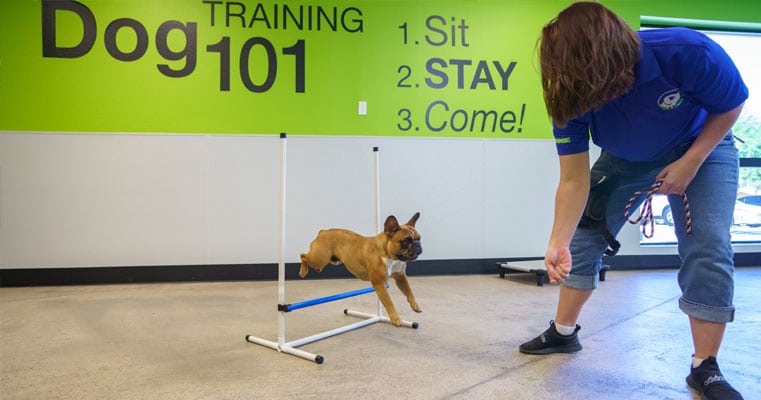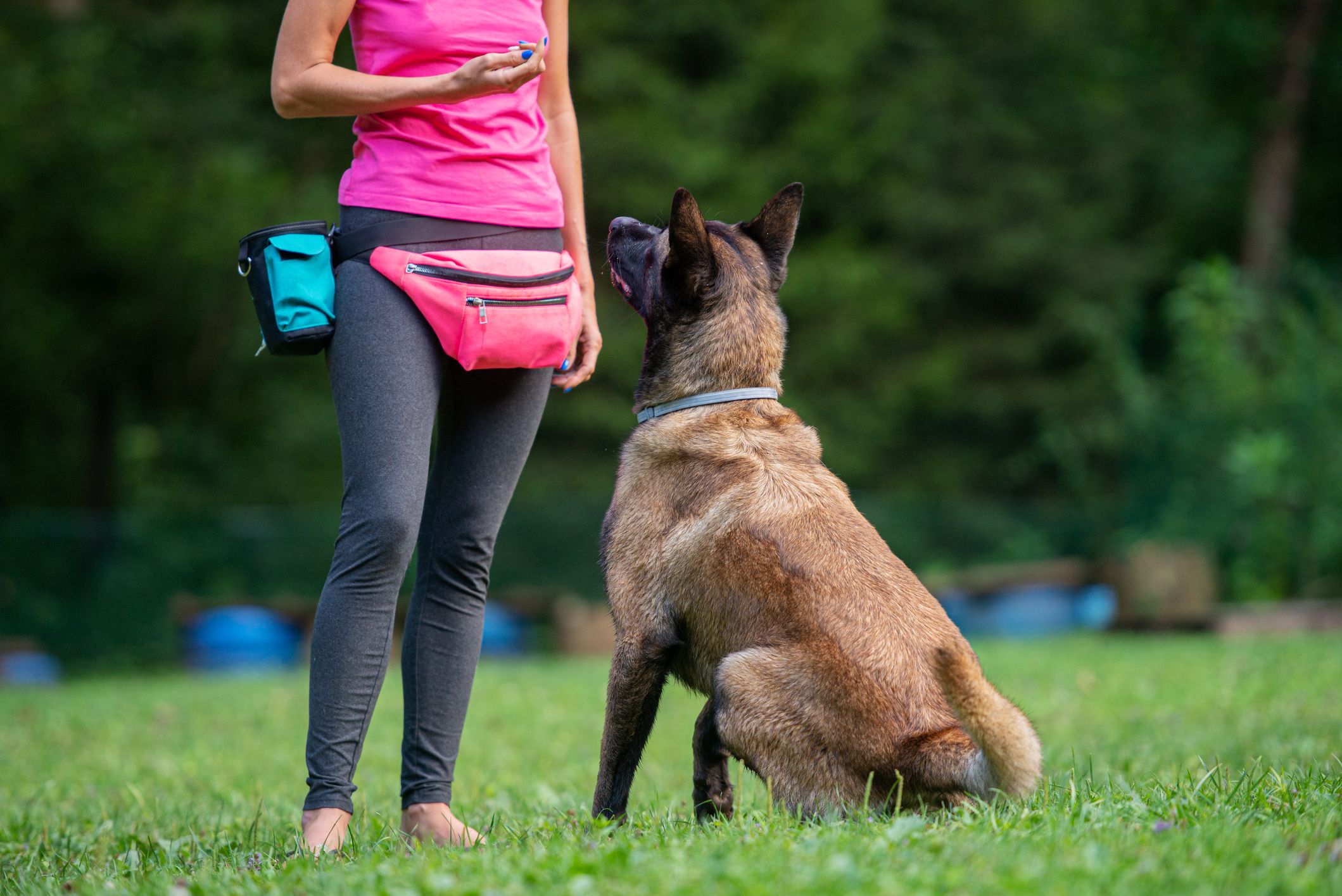Dog Training for First-Time Pet Owners: What You Need to Know
Dog Training for First-Time Pet Owners: What You Need to Know
Blog Article
Top Pet Dog Educating Techniques Every Proprietor Must Know

Favorable Support Methods
Utilizing positive reinforcement methods is crucial for effective dog training, as it promotes a relying on bond between the trainer and the pet. This technique concentrates on fulfilling preferable behaviors instead of punishing unfavorable ones, creating a setting for learning. Benefits can include deals with, praise, or play, which inspire dogs to duplicate the behaviors that gain them these benefits.

In addition, this approach boosts the canine's interest for training sessions. When pets associate training with positive experiences, they are a lot more engaged and responsive. Beyond instant therapy, positive reinforcement motivates a joint relationship between the dog and fitness instructor, lowering anxiety and fear
To make best use of effectiveness, it is essential to provide benefits immediately, making certain the pet attaches the behavior with the reinforcement. Fundamentally, favorable support strategies not just produce better-trained dogs but also advertise a harmonious collaboration in between pet dog and proprietor.
Remote Control Training Approach
The remote control training approach is a very reliable technique that builds on the principles of positive reinforcement by including a distinctive sound to mark desired behaviors. This approach makes use of a little portable gadget that creates a clicking noise, allowing trainers to connect with their dogs in a prompt and clear way. When a canine performs a habits that the owner wishes to urge, the remote control is triggered, followed by a reward, generally in the type of treats or appreciation.
The key to effective remote control training lies in consistency and timing. It is crucial to click at the exact moment the wanted behavior occurs, ensuring that the pet connects the audio with the activity and the subsequent reward. This approach not just enhances communication but additionally promotes a more powerful bond in between the dog and the proprietor, as it encourages involvement and communication during training sessions.
Clicker training can be related to a variety of habits and commands, from basic obedience to more intricate techniques. Its versatility and performance make it a preferred strategy amongst professional instructors and pet owners alike, leading the way for a responsive and well-trained canine friend.
Chain Training Fundamentals
Effective leash training is important for making certain a safe and delightful walking experience for both canines and their proprietors. Dog training. Chain training ought to begin very early and be approached with perseverance and uniformity. Start by selecting an ideal chain and collar or harness. A flat collar might benefit some canines, while others may gain from a harness that reduces pulling.
Introduce your canine to the chain progressively, permitting them to discover it in a comfortable environment. Technique loose-leash strolling once they are accustomed. This entails rewarding your canine for walking beside you instead of pulling ahead. Use treats and click this link praise to reinforce desired behavior, and be sure to remain calm and assertive.
If your pet dog begins to pull, quit walking right away. Furthermore, practice numerous strolling atmospheres to help your pet adjust to interruptions.
Regular method will strengthen your pet dog's understanding of leash decorum. Bear in mind that leash training is a recurring process; patience and uniformity will generate the finest results, cultivating a positive experience for both you and your canine friend.
Socialization Techniques
Socializing is an essential facet of canine training that need to ideally start during puppyhood yet can be useful at any age. Efficient socialization assists dogs create confidence and minimizes the possibility of behavior concerns. To carry out successful socialization approaches, go to this site subject your pet to a range of settings, people, and various other pets.
Start with regulated settings, such as puppy courses or arranged playgroups, where young dogs can connect securely. Gradually present your canine to brand-new experiences, including different sounds, surface areas, and activities. Make sure these experiences are gratifying and positive to develop a complacency.
For adult canines or those lacking direct exposure, start with low-stress situations. Short, favorable interactions with calm canines and friendly people can produce positive associations. Make use of treats and praise to strengthen desirable habits during these experiences.

Uniformity and Persistence
Recognizing the value of uniformity and persistence in canine training is essential for attaining enduring results. Educating a pet dog is a steady procedure that requires a structured approach and unwavering dedication from the owner. Each command or behavior have to be strengthened continually to aid the canine understand what is anticipated of them. Irregular training can bring about complication, making it hard for the canine to understand actions or commands, eventually impeding progression.
Moreover, perseverance is a critical part of reliable training. Pets, like humans, find out at their very own speed. Some may grasp ideas quickly, while others might take much longer. It is important for owners to continue to be supportive and tranquil, strengthening positive actions without turning to stress or punishment. This fosters a relying on partnership in between the canine and proprietor, motivating a much more prepared and enthusiastic student.
To grow uniformity and perseverance, establish a official statement regular training routine, make use of the very same commands, and guarantee that all member of the family use the same training concepts - Dog training. By doing so, you produce a steady setting conducive to finding out, enabling your dog to grow and develop into a well-behaved companion
Verdict
To conclude, effective pet training techniques, such as positive reinforcement, remote control training, and appropriate leash training, are important for fostering a healthy and balanced owner-dog relationship. Furthermore, executing socialization techniques and maintaining uniformity and persistence throughout the training procedure adds considerably to a pet's total well-being. By integrating these methods, pet proprietors can promote the growth of well-adjusted, obedient family pets, eventually improving the lifestyle for both the canine and the proprietor.
Among the most noticeable techniques are positive reinforcement, clicker training, and chain training, each offering distinct benefits that contribute to a well-behaved canine. As we discover these fundamental strategies, it becomes evident that mastering their subtleties can considerably affect the training experience and the dog's general behavior.Utilizing favorable support techniques is important for efficient canine training, as it cultivates a trusting bond in between the dog and the instructor.In verdict, efficient dog training techniques, such as favorable reinforcement, remote control training, and correct leash training, are important for promoting a healthy owner-dog partnership. By incorporating these techniques, canine proprietors can assist in the development of well-adjusted, loyal pet dogs, inevitably boosting the quality of life for both the owner and the pet.
Report this page